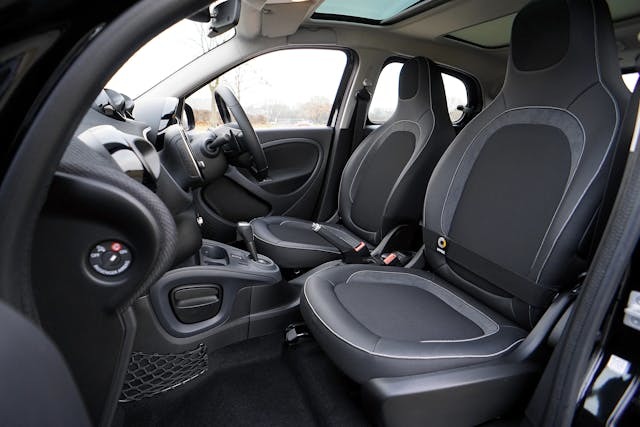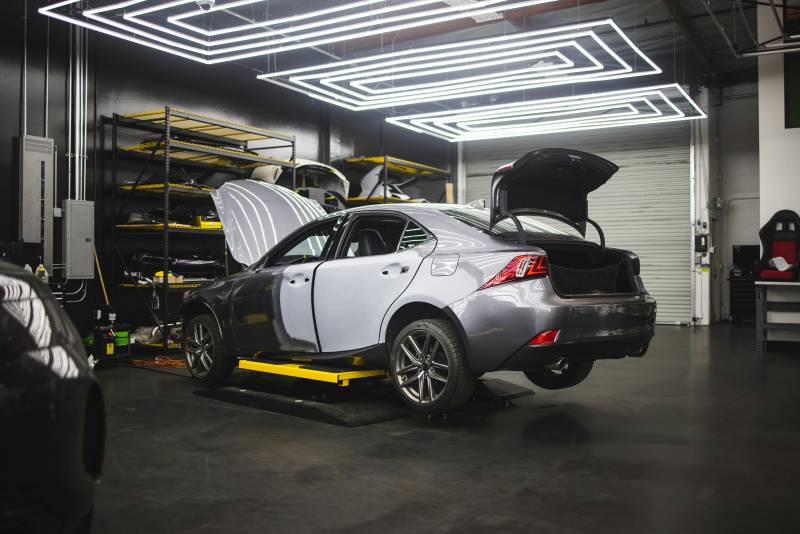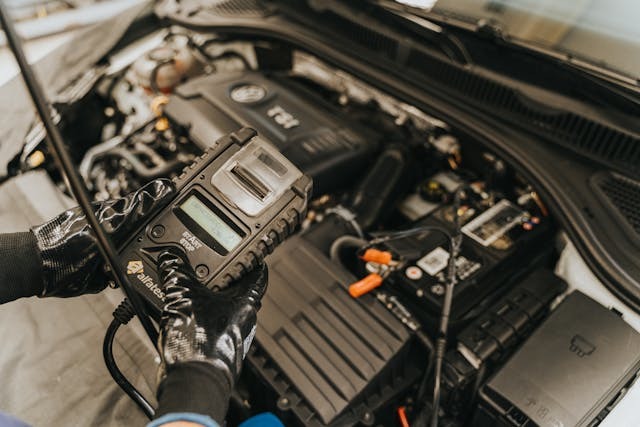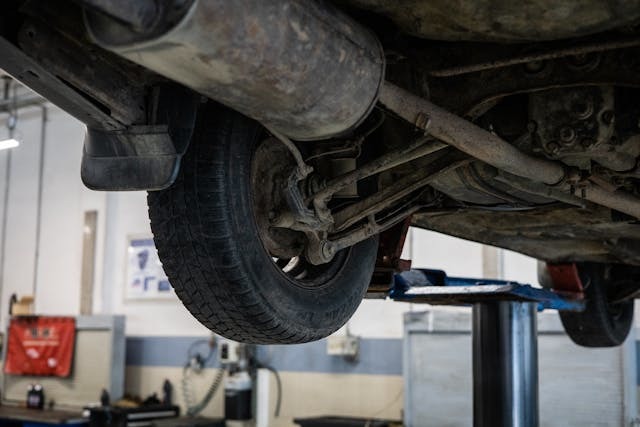MOT Centre at Bruce Cousin Motors, Scunthorpe, Lincolnshire
Bruce Cousin Motors: Your Trusted MOT Testing Centre in Scunthorpe
At Bruce Cousin Motors, we pride ourselves on offering reliable, honest, and thorough MOT testing services & car servicing in Scunthorpe, Lincolnshire. We understand the importance of keeping your car safe and roadworthy. Our goal is to ensure your vehicle meets UK safety standards while providing you with a fair and transparent experience. We’re also the only place in Scunthorpe that offers MOTs for Tesla’s! Our certified testers conduct thorough inspections to ensure your vehicle meets all legal requirements for road use in the UK.
What is the History and Purpose of MOT Testing
The MOT test was introduced in 1960 by the Ministry of Transport, hence its name. Initially, it was only required for vehicles over ten years old, but this has since been reduced to three years for most vehicles. The primary objectives of the MOT are:
- To ensure vehicles on UK roads meet minimum safety standards
- To verify that vehicles comply with environmental regulations regarding emissions
- To maintain a record of vehicle condition over time
Over the years, the test has evolved to keep pace with automotive technology and changing safety standards. For instance, in 2018, stricter measures were introduced, leading to more vehicles being classified as 'dangerous' and requiring immediate attention.
The MOT Testing Process: A Detailed Look
An MOT test at our Centre typically takes between 45 minutes to an hour and covers a wide range of vehicle components and systems. Here's a breakdown of what's involved:
1. Vehicle Identification and Documentation
The MOT test begins with a crucial step of vehicle identification and documentation verification. This process involves a thorough examination of the Vehicle Identification Number (VIN), ensuring it matches the vehicle's records and is clearly visible. The inspector carefully checks this unique identifier, which is typically found on the vehicle's chassis or displayed on a plate within the engine bay or on the dashboard. Following this, attention turns to the registration plates. The condition of these plates is assessed, ensuring they are not damaged or obscured in any way. The format of the registration is also verified, confirming it adheres to current legal standards in terms of font, spacing, and colour scheme. This initial stage of the MOT test is essential for confirming the vehicle's identity and legal status before proceeding with the more detailed mechanical and safety inspections.
2. Exterior Inspection
The exterior inspection of the vehicle involves a thorough examination of several key components. First, the body and structure are carefully assessed for any signs of excessive corrosion or damage that could affect the vehicle's integrity. The doors and bonnet are then checked to ensure they operate correctly and are securely fastened. Next, the fuel system is inspected for any leaks, and the security of the fuel cap is confirmed. The mirrors are also evaluated, with attention given to their presence, condition, and secure attachment to the vehicle. Registration plates are examined to ensure they are legible and properly secured in place. Finally, the condition and security of the bumpers are checked to ensure they meet safety standards.

3. Interior Checks
The interior checks form a crucial part of the MOT test, focusing on the vehicle's cabin and its safety features. The inspector begins by thoroughly examining the seats and seatbelts, ensuring they are securely fastened to the vehicle's frame and in good condition. Each seatbelt is tested for proper operation, including smooth extension and retraction, as well as secure locking when pulled sharply. The horn is then tested to verify its functionality, ensuring it produces a clear, audible sound. Moving on, the windscreen is carefully inspected for any cracks, chips, or other damage that might impair the driver's vision. The wipers are also checked, confirming they operate effectively and maintain proper contact with the windscreen. Finally, the steering wheel and column undergo a detailed examination. The inspector checks for any excessive play in the steering mechanism and looks for signs of damage or wear that could compromise the driver's control of the vehicle. These interior checks are vital for ensuring the safety and comfort of both the driver and passengers.

4. Under-the-Bonnet Inspection
During the under-the-bonnet inspection, the MOT tester pays close attention to various fluid levels crucial for the vehicle's safe operation. The brake fluid is carefully examined, not only for its level but also for its condition. The tester ensures the fluid is at the correct level within the reservoir and checks for any signs of contamination or degradation that could compromise braking performance. If the vehicle is equipped with power steering, the fluid for this system is also verified. The tester checks that the power steering fluid is at the appropriate level, as low levels can lead to difficulty in steering and potential system damage.
Lastly, the windscreen washer fluid is inspected. While this might seem less critical, proper levels of washer fluid are essential for maintaining clear visibility in various driving conditions. The tester ensures the reservoir is adequately filled, allowing for effective cleaning of the windscreen when needed. These fluid checks, though seemingly simple, play a significant role in the overall safety and functionality of the vehicle.

5. Lighting and Electrical Systems
The lighting and electrical systems inspection is a critical component of the MOT test, ensuring the vehicle's visibility and signalling capabilities meet safety standards. The tester begins with a thorough examination of the headlights, carefully assessing their alignment to ensure proper illumination of the road without dazzling oncoming traffic. Both the condition and operation of the headlights are checked, including the high beam function, to verify they provide adequate illumination in various driving conditions. Moving to the rear of the vehicle, the brake lights undergo a functionality test to confirm they illuminate brightly when the brake pedal is depressed, alerting following drivers to the vehicle's deceleration. The indicators are then checked for proper operation and condition, ensuring they flash at the correct frequency and are visible from all required angles. The hazard lights, an essential safety feature for emergency situations, are tested to verify that all indicators flash simultaneously when activated. Finally, the number plate lights are examined to ensure they provide proper illumination of the registration plate, making it clearly visible during night time driving. This comprehensive check of the vehicle's lighting systems is crucial for ensuring the safety of both the vehicle's occupants and other road users.

6. Under-Vehicle Examination
The under-vehicle examination is a comprehensive part of the MOT test, focusing on critical components that are often out of sight. The inspector begins with a thorough check of the exhaust system, listening for any unusual noises and looking for signs of leaks or loose mountings. They ensure the exhaust is securely attached and that noise levels are within acceptable limits. Next, the fuel system undergoes careful scrutiny. The inspector examines all visible fuel lines and connections, checking for any signs of leakage or improper routing that could pose a safety risk. The suspension system receives close attention, with the inspector examining shock absorbers, springs, and various linkages. They look for signs of wear, damage, or deterioration that could affect the vehicle's handling and stability. Brake components are meticulously inspected. The condition of brake discs, pads, callipers, and hoses is assessed, checking for wear patterns, thickness, and any signs of fluid leaks. This ensures the braking system can perform effectively in emergency situations. Finally, the wheels and tyres are examined. The inspector checks for any damage to the wheel rims and ensures the tyres are of the correct size and type for the vehicle. Tyre tread depth is measured to confirm it meets legal requirements, and the overall condition of the tyres is assessed for any bulges, cuts, or other damage that could lead to failure. Proper fitment of all wheels is also verified to ensure they are securely attached to the vehicle.
7. Emissions Testing
The emissions testing phase of the MOT is crucial for ensuring vehicles meet environmental standards, with different procedures for petrol and diesel engines. For petrol vehicles, the focus is on measuring carbon monoxide (CO) and hydrocarbon (HC) levels in the exhaust gases. The tester connects a gas analyser to the vehicle's exhaust pipe and runs the engine at a specified rpm. The analyser measures the concentrations of CO and HC in the exhaust, comparing them against the legal limits set for the vehicle's age and type. This test helps identify issues with the engine's combustion efficiency and the effectiveness of the catalytic converter. Diesel vehicles undergo a different type of emissions test, known as the opacity test. This measures the density of particulate matter in the exhaust smoke. The tester attaches an opacity meter to the exhaust pipe and rapidly accelerates the engine several times. The meter measures how much light is blocked by the exhaust smoke, providing a percentage of opacity. Higher opacity indicates more particulate emissions, which can be a sign of poor engine condition or ineffective particulate filters. The results are compared against limits that vary depending on the age and type of the vehicle. Both these tests play a vital role in identifying vehicles that are producing excessive pollutants, helping to maintain air quality standards and ensure that emission control systems are functioning correctly. If a vehicle fails either test, it will require repairs or adjustments before it can pass the MOT and be deemed roadworthy.
8. Brake Performance Test
The brake performance test is a critical component of the MOT examination, designed to ensure the vehicle's braking system meets safety standards. This test is conducted using a specialised piece of equipment called a roller brake tester. The vehicle is driven onto the tester, which consists of rollers that simulate road conditions. Each wheel is tested individually, with the inspector applying the brakes while the rollers are in motion. The equipment measures the braking force produced by each wheel, calculating the overall braking efficiency of the vehicle. This test is crucial for identifying any imbalances in braking performance between wheels or axles, which could lead to instability during emergency braking situations. Following the main brake test, attention turns to the handbrake, also known as the parking brake. The effectiveness of the handbrake is assessed using the same roller brake tester. The inspector applies the handbrake, and the equipment measures its ability to hold the vehicle stationary. This test ensures that the handbrake can reliably keep the vehicle immobile when parked on inclines. Both these tests are essential for confirming that the vehicle's braking systems can perform effectively in various driving scenarios, contributing significantly to overall road safety.
9. Suspension and Steering Check
The suspension and steering check is a crucial part of the MOT test, focusing on the vehicle's handling and stability. The inspector begins by testing the shock absorbers, which play a vital role in maintaining tyre contact with the road and ensuring a smooth ride. This is typically done using a specialised plate test or by applying pressure to each corner of the vehicle and observing how quickly it settles. The test assesses the shock absorbers' ability to dampen oscillations and control the vehicle's movement over uneven surfaces. Following this, the inspector conducts a thorough examination of the steering components. This involves checking for any signs of wear, damage, or excessive play in the steering system. The inspector will look at various parts including the steering rack, tie rods, ball joints, and steering column. They may also perform a visual inspection of the power steering system if the vehicle is equipped with one, checking for any fluid leaks or worn hoses. The steering's responsiveness and alignment are also assessed to ensure the vehicle tracks straight and responds accurately to steering inputs. This comprehensive check of the suspension and steering systems is essential for ensuring the vehicle handles safely and predictably in all driving conditions.
Why Choose Bruce Cousin Motors for Your MOT Test?
- Expert Technicians: Our team of qualified technicians are trained to the highest standards and have extensive experience conducting MOT tests. They will thoroughly inspect your vehicle and provide a detailed report of any issues found.
- Convenient Location: We are conveniently located in Scunthorpe, Lincolnshire, making it easy to drop off and pick up your car.
- Competitive Prices: We offer competitive MOT testing prices, ensuring you get the best value for your money.
- Transparent Communication: We will clearly explain any issues identified during the test and provide you with a quote for any necessary repairs.
- Fast and Efficient Service: We aim to complete your MOT test quickly and efficiently, minimising downtime for you.
If during your MOT we spot issues with the timing belt, worn hubs or slack in the system that could affect safety, we may recommend a full Cambelt / Wetbelt Replacement to help ensure your engine runs reliably — particularly important for high-mile or older vehicles. For automatic cars showing signs of hesitation, jerky shifts or fluid contamination, our Automatic Gearbox Repair & Servicing and Automatic Transmission Power-Flush Service pages explain how we restore smooth, safe gear changes and prolong transmission life. We also work on vehicles fitted with an Automated Manual Transmission (AMT), which often require clutch calibration, actuator servicing or fluid changes to maintain smooth operation and prevent MOT-related drivability faults. And if your air conditioning fails its leak test or shows warning signs of poor airflow or odour, check out our Air Conditioning / A/C Repair & Recharge service — we offer full diagnostics and servicing to keep you driving in comfort.
Book Your MOT Test Today at our Scunthorpe MOT Garage! Don't wait until the last minute to get your MOT test done. Book your appointment online or call us today!
Our MOT Process
- Thorough Inspection: We meticulously check all aspects of your vehicle as per DVSA guidelines.
- Honest Assessment: You'll receive a clear, detailed report of your vehicle's condition.
- Transparent Communication: We explain any issues found and provide advice on necessary actions.
- No Pressure: As we don't offer repairs, you can trust our impartial testing.
Booking Your MOT
Bruce Cousin Motors provides the convenience of online booking for MOT tests and car servicing in Scunthorpe. Regular MOT testing is essential for ensuring your vehicle meets safety and environmental standards. By choosing us as your local MOT garage, you can be confident that your car will receive the thorough inspection it needs to keep you safe and compliant on the road.
Schedule your MOT test today! Maintaining your vehicle's roadworthiness is crucial for safety and reliability. We look forward to helping you keep your new or used car in excellent condition!
Book an MOT
